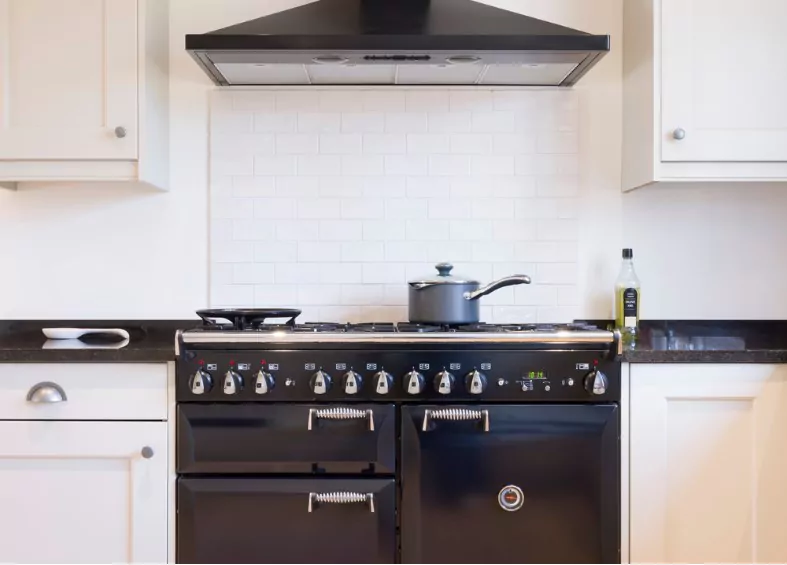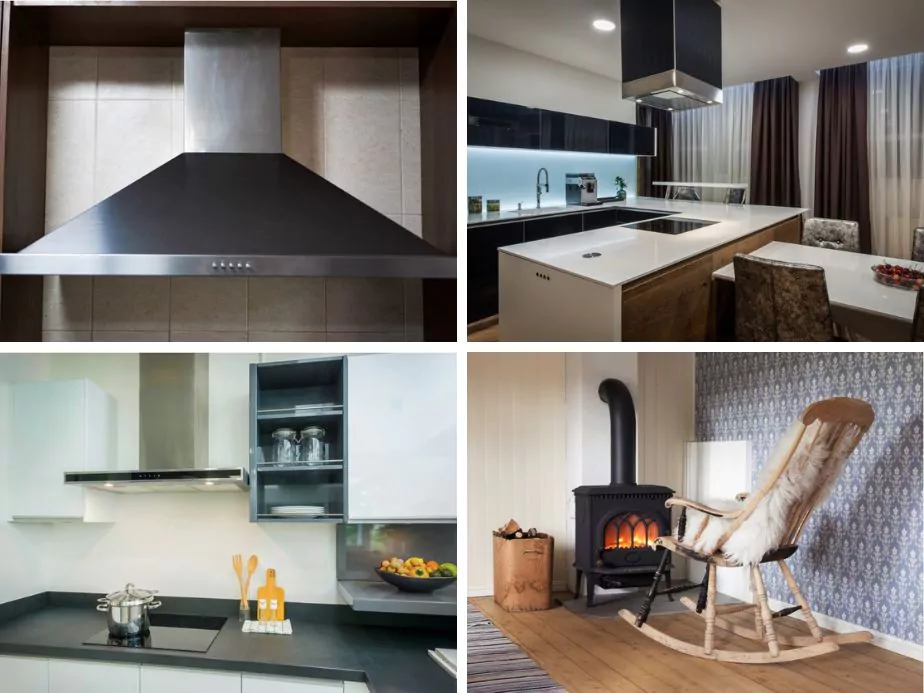A Guide To Different Types Of Chimneys

The heart of every home is its kitchen, a place where delicious food is cooked, and memories are made. In most homes, the essence of food being cooked is something that brings joy. However, the resultant smoke and odours might not be as delightful. Enter the hero of our story, the kitchen chimney! This appliance has revolutionized the cooking experience, making life easier and the air quality far more superior in our homes. But with a plethora of options, materials, models, and prices available, selecting the right one might turn into an overwhelming task. Let’s dive deep into the various types of chimneys and the things you need to keep in mind when purchasing one.
1 Understanding the Importance of Kitchen Chimneys
- Air Quality: A prime reason to buy a chimney is to maintain good air quality. When we cook, especially in an Indian kitchen, the fumes, and smoke can affect the indoor air, leading to possible health issues. A good chimney filters these out, ensuring the health of the family.
- Elegance and Stylish Looks: Modern chimneys are not just functional but also add an element of elegance to your kitchen. They come in a variety of designs, from wall-mounted to ceiling-hung, each adding a touch of class.
- Maintenance and Cleaning: Many dread the task of cleaning after cooking. An efficient kitchen chimney with features like auto clean or baffle filter requires low maintenance, making your life much easier. The auto-clean technology ensures that oily particles do not settle, and the chimney gives you notifications when it’s time for a cleaning. Plus, with baffle filters, the oil and residue collection becomes more efficient.
2 Diving Into Types of Chimneys

With a myriad of products available in the market, categorizing them helps in narrowing down the choices. Here are the main categories:
- Wall-Mounted Chimneys: As the name suggests, these are mounted on the wall and are among the most common types of chimneys in most homes. They are stylish, easy to install, and efficient in terms of smoke and odour control.
- Island Chimneys: These are suspended from the ceiling and are positioned right above the cooking area. They offer a modern look and are perfect for kitchens where the cooking stove is not adjacent to the wall.
- Built-in Chimneys: Integrated within the kitchen cabinets, they offer a seamless look. They are efficient but might be a tad bit more challenging in terms of access to cleaning.
- Corner Chimneys: Specifically designed for kitchens where the stove is located in the corner. They make optimal use of space.
3 Filter Categories
- Baffle Filter: These are ideal for Indian kitchens, given the nature of our cooking. It uses panels to change the direction of kitchen fumes, trapping oil and grease effectively.
- Mesh Filter: Made of aluminum or stainless steel, they have multiple layers to catch grease and oil. However, they require regular cleaning.
- Carbon Filter: These are secondary filters that assist in removing odors, making your cooking experience even better.
4 Things to look for while buying a Kitchen Chimney

- Your Cooking Habits: Depending on what you cook, select a chimney that caters to your needs. For instance, if you fry often, opt for chimneys with a baffle filter.
- Size and Model: It should align with the size of your cooking area. In India, the 60cm model is prevalent for stoves with 2-4 burners. However, for larger stoves, a 90cm chimney is ideal.
- Budget and Price: Prices vary significantly based on features, brands, and technology. Set a budget but ensure you don’t compromise on essential features.
- Brand and Warranty: Brands like Faber have made a mark in the industry by offering quality products with good warranty deals.
- Auto Clean Technology: This feature is a boon. It uses a heating element to get rid of the oil particles, which then get collected in a tray. It’s efficient and reduces manual cleaning efforts.
- Energy Efficiency: Given the rising energy prices, an energy-efficient chimney is not just eco-friendly but also pocket-friendly.
- Notifications and Control: Modern chimneys come with digital notifications for cleaning and filter replacement. Also, easy control options like touch or gesture control add to the convenience.
5 The Buying Experience: Making it Easy and Effective
Nowadays, it’s easy to find chimneys online, with sites offering a variety of products, prices, and deals. Here are some tips:
- Reviews and Feedback: Before finalizing your purchase, always look for reviews. They give a genuine insight into the product’s performance.
- Compare Prices: Different sites offer different deals. Compare prices to get the best bang for your buck.
- After-Sales Service: A good product is backed by efficient after-sales service. Ensure the brand you choose has a good service reputation.
6 What is the best size of Chimney for a home?
The ideal size for a kitchen chimney largely depends on the size of your cooking area and the number of burners on your cooktop or stove. However, some general guidelines can help you determine the best size for your needs:
Alignment with Stove Size: At the very least, the width of the chimney should align with the size of your stove or cooktop to effectively capture fumes and smoke. If your stove has:
2-4 burners:
- A chimney width of 60 cm is commonly preferred.
- More than 4 burners: A chimney width of 90 cm is recommended.
Size of Kitchen: For smaller kitchens, a large chimney might seem overwhelming and may not fit well aesthetically. Conversely, in larger kitchens, a small chimney might appear out of place and might not be as effective in maintaining air quality.
Volume of Cooking: If you engage in heavy-duty cooking, frying, or grilling regularly, especially in larger quantities, you might benefit from a wider chimney, even if you have a smaller stove. This ensures more efficient suction of fumes and odors.
Type of Cooking: Indian cooking, for instance, involves a lot of frying and grilling which leads to more smoke and odours. For such kitchens, even if the stove is of moderate size, it’s better to opt for a 90 cm chimney to ensure better suction and performance.
Kitchen Layout: If your stove is placed against a wall, a wall-mounted chimney is best. For stoves located on a kitchen island or in the center of the room, island chimneys, which are generally broader, are ideal.
Recommendation: A general rule of thumb is to always opt for a slightly larger size than you believe you might need. This ensures maximum effectiveness in capturing fumes and smoke, leading to a better cooking environment. A 90 cm chimney is often recommended because it provides wider coverage, but if space is a constraint or if you have a smaller cooktop, a 60 cm model will do just fine.
7 Wrapping Up
To conclude, a kitchen chimney is an indispensable appliance in today’s homes, ensuring efficient cooking, elegance, and superior air quality. With the above guide, you can find the best chimney that suits your kitchen’s needs. So, the next time the aroma of food fills your home, it will be without the accompanying smoke and odors, all thanks to your stylish and efficient kitchen chimney. Happy Cooking!
Community Q&A
About This Article
This article has been viewed 316 times.



